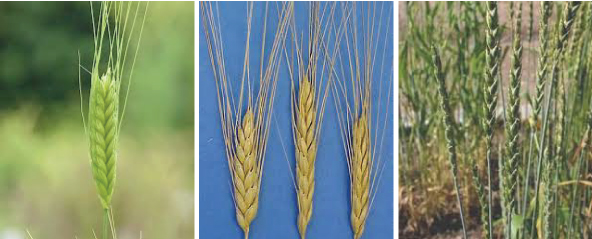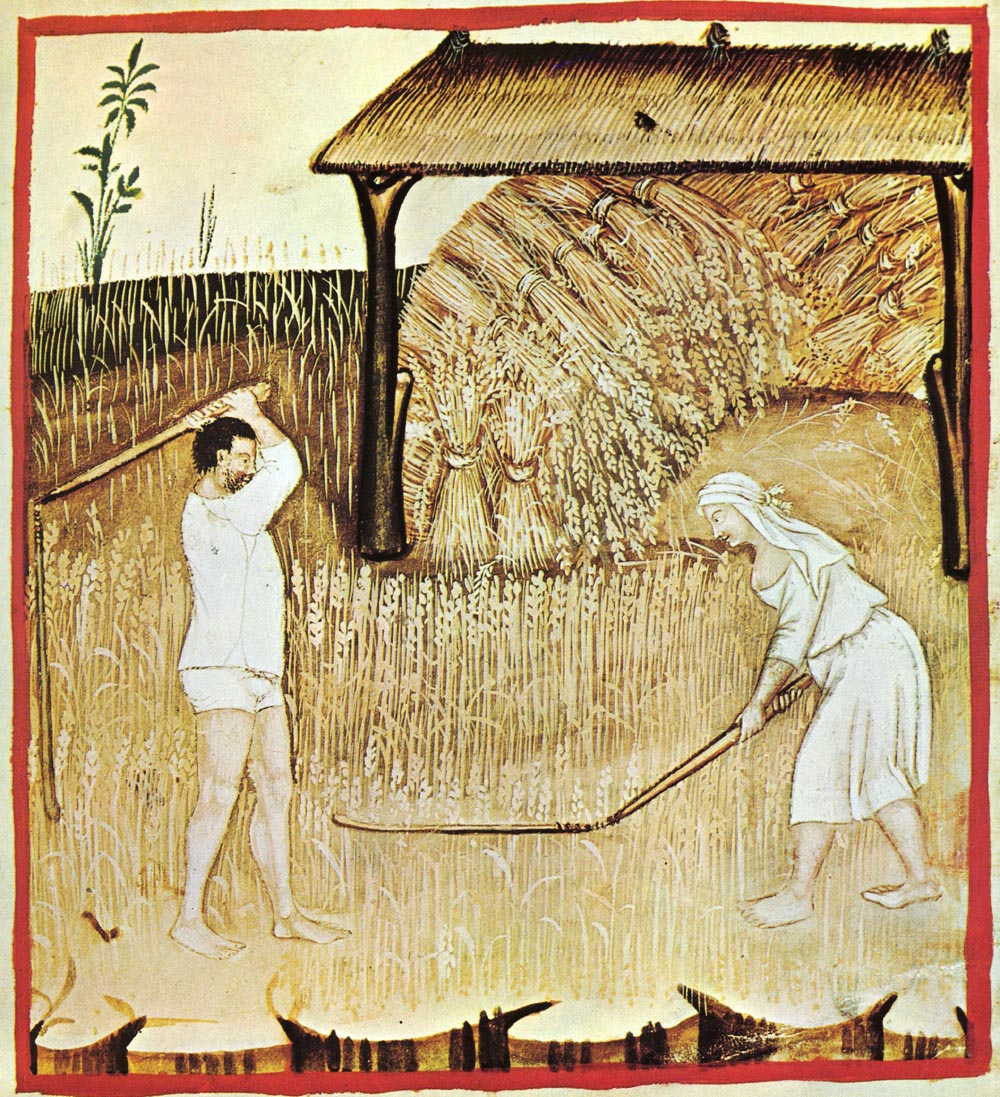Einkorn: The Original Wheat
What started people eating foods that are now considered traditional? People must have had rational reasons for picking one food over another and, it would seem that those that have survived to become our staples were very sound choices. Our modern day thinking has us looking for protein, fats and carbs. These were not part of the intellectual landscape in the ancient world. They used an entirely different methodology for determining everything from what stone to build with to what they should be eating, and why.
Wheat having been chosen as a staple is indeed an interesting choice. Wheat has been a domesticated crop since about 8000 to 9600 BCE, eventually spreading to Europe and China. As testimony to the soundness in judgment of this food choice, we’re still eating it many thousands of years later.
Why Fix What Is Not Broken
All wheat types have the general botanical name; Triticum. Before being hybridized the main wheat types were:

- Einkorn, the “mother wheat,” is the simplest unmodified wheat type
- Emmer, although ancient, is a different hybridized species, out of which came Durum or hard wheat.
- Spelt; is also a more complex derivative of Emmer; a subspecies of common wheat.
The genealogy of Einkorn and Emmer is straightforward. That of all other wheat types, including spelt have been harder to precisely determine. Einkorn and Emmer are grown on a small scale in North America. They are cultivated to a much larger extent in Europe, the near East and North Africa but are no where near the scale of common wheat.
Modern wheat varieties have been hybridized to support their enormous profitability to large agribusiness and commodities trading. Their cultivation is centering on maximizing yield and squeezing every last bit of profit out of it. Aggressively hybridized, artificially fertilized, sprayed with pesticides, herbicides and otherwise processed with chemicals, wheat quality has been consistently jeopardized. It would seem that as long as wheat is not rendered immediately lethal through questionable processing practices, relatively few question it.
Wheat consists of bran – the husk, germ, and the endosperm. When milled altogether we get “whole wheat flour.” Steadily, modern milling methods focused more and more on conventional “white flour.” With it came cakes, biscuits and white bread; foods that had never existed before. With these changes and the addition of sugars, Dr. Weston A. Price observed that general health started declining as tooth decay was on the rise.[1]
It is now standard practice to strip 11 main nutrients out of wheat, to then add back these 5; riboflavin, thiamine, folic acid, niacin, iron, and sometimes calcium, to make this now inferior, so-called “enriched flour,” the technical equivalent of “wheat flour.” What is left is more a leftover by-product than actual wheat. Later, an arsenal of still more chemicals get added to wheat doughs to “condition” and “fluff them up” before they are baked.
Common sense suggests that doing all this to a staple food will impact both food and those eating it. Researchers have noted that with the removal of these key nutrients has altered how wheat digests; breaking down more quickly and raising blood sugar. To stabilize this spike in blood sugar, the liver metabolizes it by storing it as fat.
Gluten intolerance is now part of our vocabulary. Gluten in wheat has been part of baking for millennia and has never before been noted as having been problematic. So, what gives? From extreme processing and hybridization, experts are finally concluding that modern wheat may now be a leading cause of major health problems. It looks like it is time for a major rethink; especially when it comes to wheat.
Einkorn – The “Mother Wheat!”
When there’s a problem, we need to go back to a time before there was a problem.
 Everyone is all for progress when it is beneficial. When it isn’t, we are seldom told about it as it creeps into our lives without us knowing it. Common wheat was developed to maximize crop yields, be easier to process and bake with. Unfortunately, this was done at the expense of flavor, nutritional value and the environment.
Everyone is all for progress when it is beneficial. When it isn’t, we are seldom told about it as it creeps into our lives without us knowing it. Common wheat was developed to maximize crop yields, be easier to process and bake with. Unfortunately, this was done at the expense of flavor, nutritional value and the environment.
Einkorn, by comparison produces about half the crop yield of regular wheat, is harder to mill, process and, has a gluten type and content better suited to unleavened breads than conventional baking. This is why it was never exploited further. Its exceptional flavor and nutritive density and its ability to grow in poor soils have preserved it exactly as it was, unchanged.
Like the organic movement, this is a conscious quality of life choice. An attitude tailor made for the more resilient and humble of heart, making it worth cultivating and preserving as part of heritage. It would seem that the rural people found all over Europe and the Mediterranean are of that mindset; the task of preserving these ancient grains intact over many thousands of years having fallen to them. Einkorn is well suited to Southern Italian agriculture where it has been continuously cultivated since before Roman times and artfully used in cuisine.
The word “korn” literally means grain in German; Einkorn meaning “one grain.” The domesticated form of Einkorn – Triticum monococcum has not strayed very far from its wild form -Triticum boeoticum. Never having been hybridized, it remains the purest species of wheat available. It is also referred to as a type of “farro” in Italy.
Grown mainly because of its excellent food value and flavor whether cooked as simple porridge, made into pasta or baked into a dense bread, Einkorn has been blessed by having been ignored and it’s genetic structure untampered with. Einkorn having the simplest genetic structure of any wheat has a diploid chromosomal structure. All wheat varieties have gluten, each acquiring complexity with higher chromosomal count from hybridization, leading to a softer grain, higher in gluten.
High gluten wheat makes baking easy; a great thing if that is what you are after. However, when mixed with water you have the glue once used to hang wall paper or make Papier Mâché. If our body is made up of roughly 50-60% water, what will this do to the consistency of those waters and, what effect will that have? It is easy to see that this would affect everyone by degree; reason enough to consider grains like Einkorn.
Gluten intolerance is a growing health concern that the consensus of experts link to gluten types found in hybridized wheat;[2] more specifically, those having the “D” genome found in highly hybridized hexaploid wheat. Foods tested for potential gluten intolerance, specifically test for this “D” genome which thankfully is absent in Einkorn and its gluten when tested. Although, there is a need to be cautious about drawing conclusions, laboratory tested analysis like this strongly support the general benefits of Einkorn.
Unlike conventional wheat, Einkorn retains most of its nutritive value during processing and has higher nutritional values compared to other wheat species. Doing more with less, Einkorn maintains this high nutritive density within its simpler genetic make-up. Einkorn is also high in antioxidant value strengthening cells against being oxidized. Einkorn, being comparatively more nutritious, having a much simpler genetic structure from having been left as nature had intended it to be seems to be showing itself as generally beneficial, less problematic and tastier than other wheat types.
Baking with Einkorn is like cooking with old fashioned grains. Those old enough to remember what real food actually tasted like, when trying Einkorn have stated that; “Einkorn tasted as real as they remembered food to have once been.” Naturally, if a person has been used to baking with regular wheat flour, some adjustments will need to be made to get similar results. The effort will certainly be worth it!.
